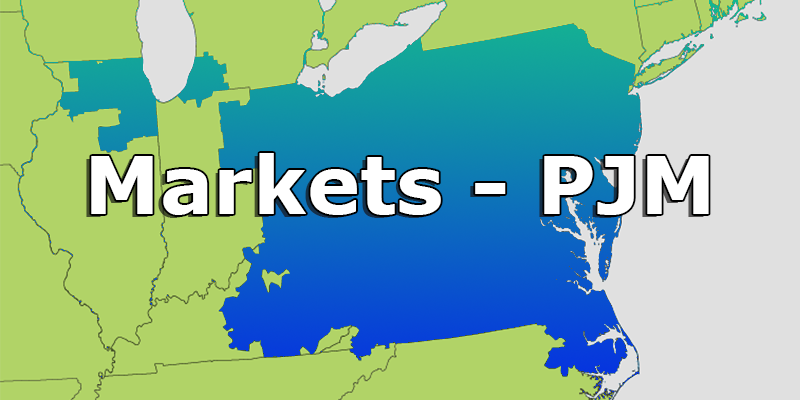On June 21, 2022, PJM posted the results of its capacity auction, also known as the Reliability Pricing Model (RPM), for the planning year June 2023 to May 2024. The execution of this auction has been postponed multiple times over the last few years due to FERC rulings on the validity of the PJM auction’s design. Differences between FERC and PJM seem to have finally been resolved to the extent to allow the auction to proceed. This is important because these latest auction results give the market some much-needed clarity into future capacity costs, which are a major cost component of next year’s overall electricity costs for all retail customers in PJM states.
4 min read
Coincidental Peaks Should Peak Your Interest
By 5 on May 31, 2022
An Overview of Coincidental Peak Costs by ISO
Coincidental Peak (CP) is the measurement of an electricity meter’s actual usage at the time of the regional grid’s highest demand and determining that meter's share of the entire grid’s demand. This concept of identifying a facility’s share of the grid’s total maximum demand is often used in determining the allocation of specific cost components. The specific methodology of how that equation works and which cost components it impacts varies from region to region, and often even utility to utility, and even by customer class, but the overall concept is the same. In this post, we explain how this works in each of the major, deregulated electricity regions, and detail which costs are the most impacted by this variable.
Topics: Markets PJM NYISO ERCOT Demand Response Resiliency
3 min read
Potential Impacts of Electrification
By 5 on May 31, 2022
A Review of Resources Adequacy Risk in PJM
On May 17, 2022, PJM released the second phase of its “living study”, titled Energy Transition in PJM: Emerging Characteristics of a Decarbonizing Grid, which analyses the potential impacts associated with the evolving resource mix. The report, which follows the initial framework released in December 2021, studies three scenarios: Base, Policy, and Accelerated (see Figure 1). Each scenario represents an increasing amount of annual energy in PJM served by carbon-free generation in 2035: 40%, 50%, and 70% respectively. For reference, according to Monitoring Analytics, the grid operator’s market monitor, in 2021 39% of the power produced in PJM was from carbon-free resources.
Topics: Markets PJM
4 min read
Can PA Coal Befriend Reggie?
By 5 on April 29, 2022
Pennsylvania joins RGGI, Largest Coal-Fired Power Plant Announces Continuation of Operations.
On April 23, 2022, Pennsylvania became the 12th member of the Regional Greenhouse Gas Initiative (RGGI), a market-based cap-and-invest initiative that sets an allowance on CO2 emissions and requires power plants to pay to offset their carbon emissions. As part of RGGI, PA will be required to make annual emissions reductions of 3%.
Topics: Markets PJM
3 min read
Shadows Coming for PJM's Solar Market
By 5 on February 28, 2022
A Two-Year Pause on Solar Projects in PJM
The geographic area served by the PJM Interconnection spans from Virginia all the way to northeast Illinois. And despite the name of the hit show, “It’s Always Sunny in Philadelphia”, this is not a particularly sunny part of the country. It may be a surprise, then, to learn that PJM is overwhelmed by applications for new solar farms. In fact, PJM is proposing a two-year pause on reviewing new generation projects (most of them solar) that seek interconnection with its power grid to slow the influx.
Topics: Markets PJM
2 min read
Capacity Auction Delay of Game… Again
By 5 on January 27, 2022
What Caused the Most Recent PJM Capacity Auction Delay?
On December 22, 2021, the Federal Energy Regulatory Commission (FERC) ordered PJM to change its reserve market rules. This move, yet again, delays the 2023/2024 capacity auction, previously set to occur on January 25, 2022.
Topics: Markets PJM
3 min read
Energy Transition in PJM
By 5 on December 21, 2021
On December 15, 2021, PJM released the initial findings of a multiphase, multiyear "living study" that captures the potential impacts of an evolving grid resource mix that includes more electricity from renewable energy resources such as wind and solar assets. PJM's paper, "Energy Transition in PJM: Frameworks for Analysis," identifies critical gaps and opportunities within the current market construct and offers insights into the future of market design, transmission planning, and system operations with additional renewable generating assets in the grid. The paper cautions that the study’s assumptions are continually refined based on internal and external stakeholder feedback. PJM’s five key areas of focus are summarized below.
Topics: Markets PJM
3 min read
EPA to Coal Plants, Comply or Close
By 5 on November 30, 2021
EPA’s stricter wastewater rules among reasons for additional coal-fired power plant retirements across PJM
In July 2021, the Environmental Protection Agency (EPA) announced new initiatives to strengthen wastewater pollution regulations for power plants that use steam to generate electricity and use coal as their fuel source. These initiatives are expected to affect 75 coal-fired power plants nationwide. The new rules would require these power plants to reduce their level of toxic metals, such as mercury, arsenic, and selenium, from plant wastewater before discharge into streams and rivers. Noncomplying plants had an October deadline to show state regulators how they plan to comply with the EPA’s regulations by 2028.
Topics: Markets PJM Sustainability Renewables
1 min read
FERC Goes to Work on Transmission Upgrades
By 5 on October 28, 2021
In July 2021, the Federal Energy Regulatory Commission (FERC) unanimously voted to approve an Advanced Notice of Proposed Rulemaking (ANOPR), allowing the public to provide comments and recommendations on how the commission can best improve transmission planning, cost allocation, and interconnection process. Responses were due back in mid-October. With the future generation mix shifting toward more renewable energy, FERC is considering requiring transmission providers to identify geographic regions that expect high renewable development and prioritize transmission planning appropriately. PJM, Amazon, and the Department of Energy (DOE) were among the respondents, recommending a more forward-looking planning process.
Topics: Markets PJM
2 min read
Illinois Goes Green and Clean
By 5 on September 30, 2021
Illinois Passes Nation-Leading Climate and Equitable Jobs Act
On September 15, Illinois Governor J.B. Pritzker signed historic clean energy legislation, known as the Climate and Equitable Jobs Act (CEJA). Among many things, the CEJA requires Illinois to achieve a 100% carbon-free power sector by 2045, becoming the first Midwestern state to commit to ending the use of fossil fuels.



